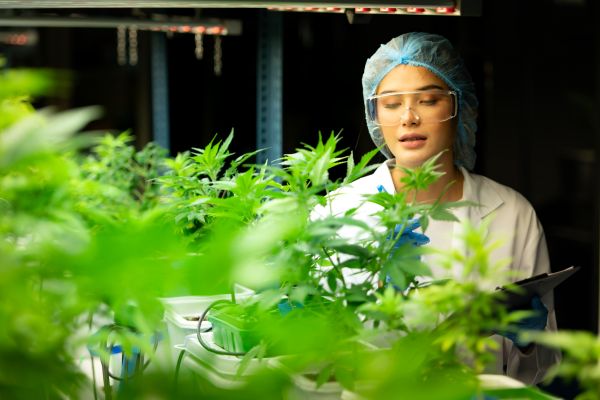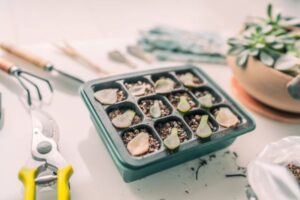In the heart of our homes, a wondrous symphony of life unfolds as we embrace the world of indoor gardening. Amidst the bustling routines of modern life, indoor plants serve as green companions, enriching our surroundings with their captivating beauty and revitalizing the air we breathe. As caretakers of these botanical wonders, we diligently provide water, tender care, and the warmth of our affection. Yet, in the midst of our nurturing endeavors, we must not overlook the most fundamental aspect of a plant’s existence: light. Light is the essence of life for plants, the radiant energy that fuels their growth and sustenance through the miraculous process of photosynthesis.
In this definitive guide, we embark on a journey to explore the profound significance of light for our indoor plants. It is a journey that delves beyond the surface, unlocking the secrets of plant light requirements, the art of assessing light conditions within our homes, and the profound impact of supplemental artificial lighting. From the delicate dance of rotating and pruning for balanced growth to the vigilant monitoring and adjustment of light levels, we shall unravel the mysteries of this intricate relationship between plants and light.
Let us step into a realm where science and wonder intertwine, where our passion for plants meets the artistry of horticulture. Together, we shall discover the enlightening path to providing the right amount of light for our beloved indoor plants, nurturing a garden of grace and vibrancy that thrives within the embrace of our living spaces. So, cast open the curtains of curiosity, and let us journey into the radiant world of light for your indoor plants.
Understanding Plant Light Requirements
Before embarking on your indoor gardening journey, it is essential to understand the varying light requirements of different plant species. Some plants thrive in bright, direct sunlight, while others prefer lower light conditions and may suffer if exposed to intense rays. When selecting plants for your indoor garden, consider the lighting conditions in your home and match them to the light preferences of your chosen plants.
High light plants, such as succulents and cacti, require at least six hours of direct sunlight each day to flourish. On the other hand, low light plants, like pothos and snake plants, can survive with only a few hours of indirect or filtered sunlight. Moderate light plants, such as philodendrons and peace lilies, fall somewhere in between, needing bright but indirect light to thrive. By familiarizing yourself with these light categories, you can strategically place your plants in areas that cater to their specific needs.
Assessing Light Conditions in Your Home
Understanding the available light in your home is a crucial step in providing the right amount of light for your indoor plants. Start by observing the different areas of your living space throughout the day to identify patterns of natural light. South-facing windows typically receive the most intense sunlight, making them ideal for high light plants. East and west-facing windows offer moderate light, while north-facing windows provide the lowest light levels.
Keep in mind that the amount of natural light can fluctuate based on the time of year and weather conditions. To ensure consistent light exposure, consider using a light meter to measure the intensity of light in various spots around your home. This tool can help you determine which areas are best suited for your plants and guide you in making adjustments as needed.
Supplementing with Artificial Light
In indoor environments with limited natural light, supplementing with artificial light can be a game-changer for your plants. Various types of grow lights are available, each designed to mimic different aspects of natural sunlight. The two most commonly used types are fluorescent and LED grow lights.
Fluorescent lights are affordable and work well for low to moderate light plants. They emit a broad spectrum of light, making them suitable for promoting overall growth. LED grow lights, on the other hand, are more energy-efficient and provide a targeted spectrum of light, ideal for high light plants or specific growth stages. When using artificial lights, ensure they are positioned at the appropriate distance from your plants to prevent burning or light deprivation.
Rotating and Pruning for Balanced Growth
To maintain balanced growth and prevent your plants from becoming lopsided due to uneven light exposure, consider rotating them regularly. Gently turn your potted plants every few weeks to ensure all sides receive equal light exposure. Rotating also encourages even development, preventing your plants from leaning toward the light source excessively.
Pruning is another essential technique to promote healthy growth and manage light distribution within the plant. Regularly trim back leggy or overgrown branches to redirect energy to healthier growth points. This practice ensures that each part of the plant receives sufficient light, improving overall vitality and appearance.
Monitoring and Adjusting Light Levels
Finally, the key to providing the right amount of light for your indoor plants is continual monitoring and adjustment. As your plants grow and seasons change, their light requirements may evolve. Be attentive to any signs of light stress, such as pale or yellowing leaves, stunted growth, or leaning towards the light source. These indicators may suggest that your plant needs more or less light.
Remember that finding the perfect balance is an ongoing process, and a little experimentation is sometimes necessary. Don’t be afraid to move your plants around and observe how they respond to different light conditions. Over time, you will develop a keen eye for your plants’ needs and become a master at fine-tuning their light exposure.
Conclusion
As we draw the curtain on this enlightening journey through the world of indoor plant lighting, we find ourselves standing amidst the lush and vibrant garden we have lovingly cultivated. Throughout this definitive guide, we have come to understand the indispensable role of light in the lives of our cherished green companions. Like a nurturing embrace, light sustains them, guiding them on their path of growth and transformation. We have explored the intricacies of plant light requirements, delved into the art of assessing light conditions in our homes, and harnessed the power of supplemental artificial lighting to ensure our plants receive the optimal illumination they crave.
Armed with newfound knowledge, we have learned to dance in harmony with the ever-changing rhythms of our indoor garden. We rotate and prune with purpose, sculpting a balanced and well-proportioned oasis of greenery. We observe, with keen eyes, the subtle signs of our plants’ communication, ever attuned to their needs for more or less light. As the seasons shift and sunlight angles change, we remain vigilant and adaptive, ensuring our green charges thrive in an environment that mirrors their natural habitat.
Beyond the tangible benefits of purifying our air and beautifying our living spaces, our indoor garden has bestowed upon us a deeper connection to the natural world. Through tender care and attentive nourishment, we have nurtured life itself, witnessing the breathtaking cycle of growth, bloom, and renewal. This journey of tending to our indoor plants has taught us patience, resilience, and an appreciation for the resilience of nature.
But this is not a conclusion; rather, it marks the beginning of a continuous journey. As we continue to cultivate our indoor garden, we recognize that there is always more to learn, explore, and experience. Our green companions will continually surprise us, revealing their captivating secrets, and in return, they will bask in the warmth of our devoted care.
May this guide serve as a guiding light on your ongoing horticultural odyssey. Embrace the joy of nurturing life, and let your indoor garden be a testament to the harmonious relationship between humans and the botanical realm. As you continue to provide the right amount of light, be not only the keeper of plants but also a steward of nature’s delicate balance. Cherish each leaf unfurled, each blossom in full splendor, for in their vibrant beauty lies the essence of life itself.
So, with hearts alight with passion and purpose, let us celebrate the journey of becoming enlightened indoor gardeners. And as we gaze upon the flourishing oasis we have created, let us remember that amidst the hum of modern life, we have found solace, serenity, and inspiration in the simple, radiant glow of light for our indoor plants. Happy gardening, and may your indoor garden forever flourish under the gentle radiance of your care.



